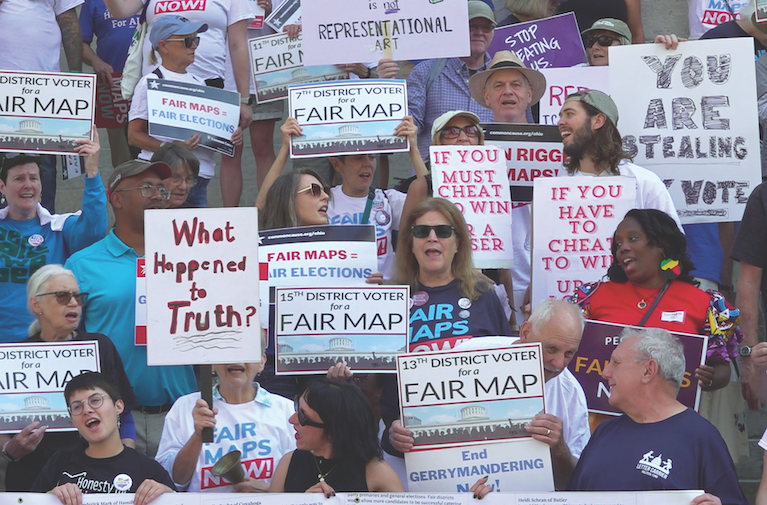A mid-decade battle over congressional redistricting is playing out in state capitals, in courtrooms and on the ballot.
The efforts to redraw U.S. House districts for partisan advantage got jump-started when Texas Republican lawmakers decided to reshape districts.
Since then, lawmakers in Democratic-led California and Republican-led Missouri have approved revised districts, and officials in other states are considering it.
Utah’s Republican-led Legislature earlier this week endorsed an altered congressional map in response to a court order.
U.S. House districts typically are redrawn once a decade, immediately after a census count, but some states have no prohibition on doing it more frequently.
The U.S. Supreme Court also has said there is no federal prohibition on political gerrymandering, in which districts are intentionally drawn to favor one party.
The stakes are high, because Democrats need to gain three seats in the 2026 elections to take control of the House, which would allow them to impede President Donald Trump’s agenda. The president’s party historically has lost seats in midterm elections, a fate Trump is trying to avoid.
Lawmakers in Ohio, Texas, Maryland, Utah, Louisiana, California, Missouri and Kansas are all attempting redistricting in their states.
Ohio will have new U.S. House districts for the 2026 elections, though their shape remains to be determined. Republicans currently hold 10 of the state’s 15 congressional seats.
Ohio’s constitution requires new U.S. House districts because the ones adopted by Republican officials after the 2020 census didn’t have sufficient bipartisan support.
If bipartisan consensus remains elusive, Republican lawmakers in November could adopt revised districts without need of any Democratic votes.
Federal judges in Texas are considering a legal challenge to new congressional districts passed at Trump’s urging during a special legislative session in August.
Civil rights groups and dozens of minority voters contend the new map intentionally reduces minority voters’ influence in violation of the 1965 Voting Rights Act and the U.S. Constitution. They want to prevent the new districts from being used.
Republicans hold 25 of the 38 congressional seats in Texas. The revised map could give Republicans a shot at picking up five additional seats in next year’s elections.
Voting began earlier this week in California in advance of a Nov. 4 election that will determine whether new congressional districts are implemented.
Democrats already hold 43 of California’s 52 seats, but after Texas undertook redistricting, Democratic Gov. Gavin Newsom urged California lawmakers to reciprocate. They did so by passing a revised U.S. House map that could give Democrats a chance to gain five additional seats.
Unlike Texas, California has an independent citizens’ commission that handles redistricting after the census. So any changes to the map need voter approval.
After Texas and California took action, Missouri lawmakers joined the redistricting battle by passing a revised U.S. House map designed to give Republicans a shot at winning seven of the state’s eight districts — one more than they currently hold.
The map targets a seat held by Democratic Rep. Emanuel Cleaver by stretching the Kansas City-based district into rural Republican areas.
Opponents are pursuing a referendum petition that, if successful, would force a statewide vote on the new map. Opponents also have filed several lawsuits asserting that mid-decade redistricting isn’t allowed under the state constitution.
In Utah, the Legislature passed a revised U.S. House map this week that could give Democrats an improved chance at competing for a seat. Republicans currently hold all four of the state’s seats.
The revised map would place Democratic-leaning Salt Lake City in a single district that stretches into rural areas, instead of splitting the city among multiple districts, but the revision still must be reviewed by a judge, who is expected to approve a new map by November.
Republican lawmakers who hold a supermajority in the Kansas Legislature have been gathering petition signatures from colleagues in an attempt to call a special session on congressional redistricting in November.
Republicans hold a 7-2 edge over Democrats in Indiana’s congressional delegation.
Some Democratic state lawmakers in Maryland have said they will file redistricting legislation for the 2026 session, and Democratic Gov. Wes Moore also has expressed support.
“If we are going to have states in mid-cycle, in mid-decade, determining whether or not they have fair maps or not, then so will Maryland. Then, we should have that conversation, too,” said Moore.









